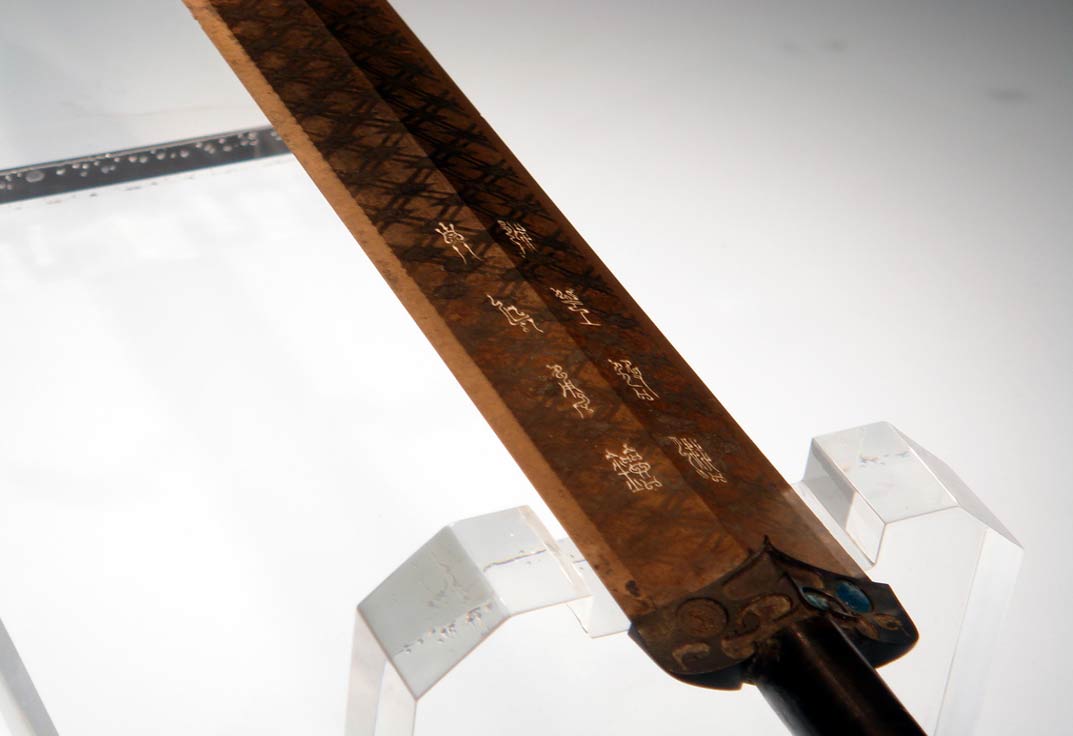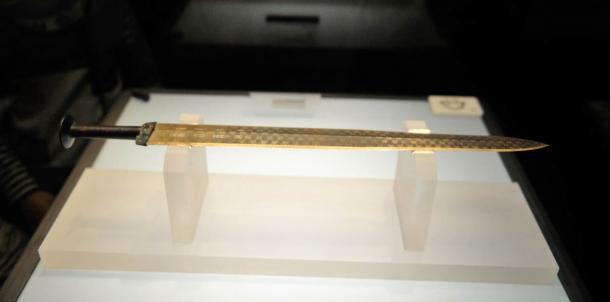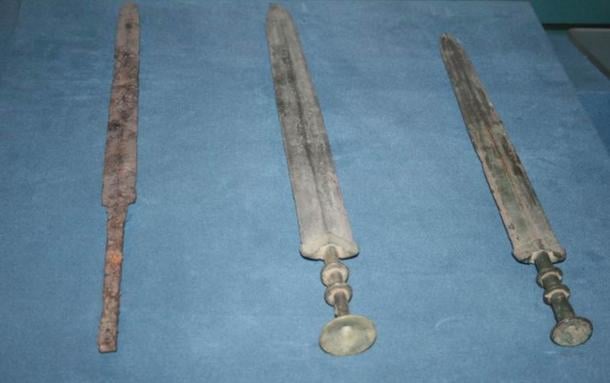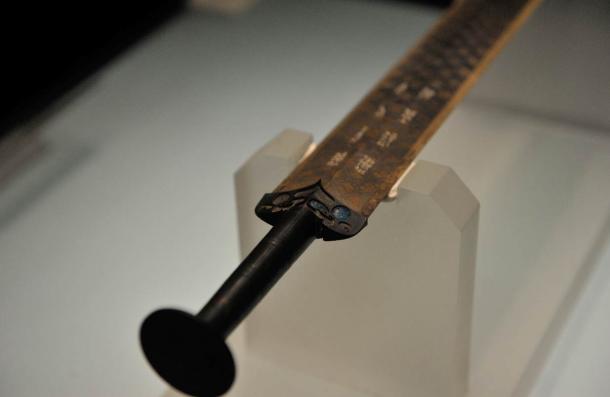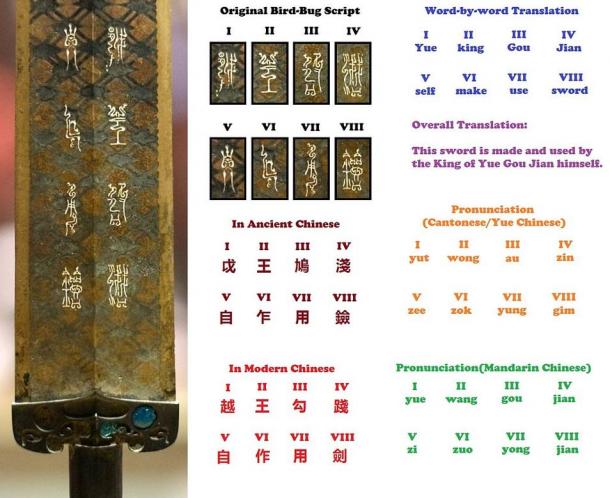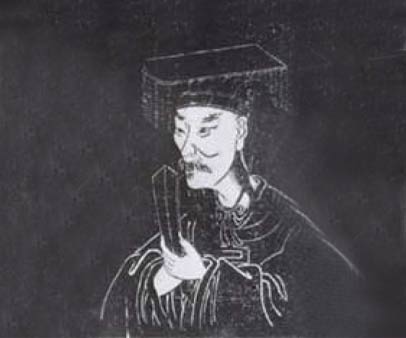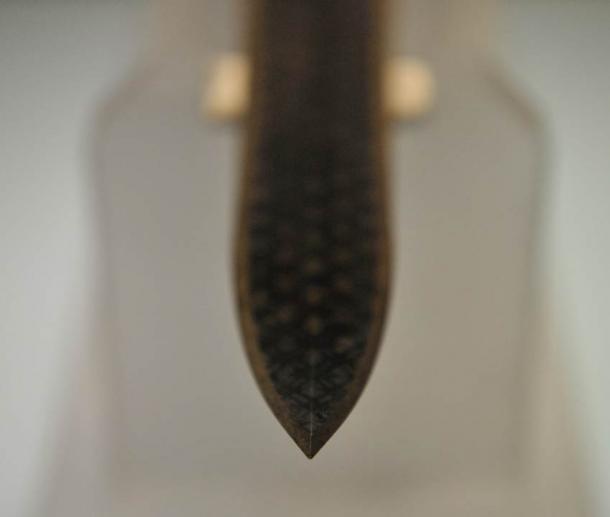Goujian - The Ancient Chinese Sword that Defied Time
June 01, 2017
Over fifty years ago, a rare and unusual sword was found in an ancient tomb in China. This ancient weapon is known as The Sword of Goujian, and though its supposed to be over 2,000 years old, its blade is said to not have a single trace of rust. The swords blade has managed to retain its sharpness, drawing blood when a persons finger is tested on its edge, as if it was completely immune by the passage of millennia. But aside from this strange quality, its craftsmanship has been praised for being intricately detailed for a sword that was forged in a supposedly technologically-limited era.
Discovery of the Sword of Goujian

The discovery of the Sword of Goujian dates back in 1965, during which an archeological survey was being performance along the second main aqueduct of the Zhang River Reservoir in Jingzhou of Hubei province. More than fifty ancient tombs of the Chu State a successful hegemonic and expansionist state during the Spring and Autumn Period in the early 8th century BCE - were found in Juangling County.
And so, an archeological dig was initiated, beginning in the middle of October 1965 and ended in January 1966. In December 1965, 4.3 miles or 7 kilometers from the ruins of Jinan, an ancient capital of Chu, the archeological team responsible for the excavation discovered an ancient tomb. In its casket was a skeleton, and next to it was a near air-tight wooden box. From inside this box, they removed a perfectly preserved bronze sword in its scabbard.
This sword is now identified as the Sword of Goujian, and it was unearthed by these archeological researchers along with 2,000 other artifacts.
To their amazement, upon unsheathing the bronze sword, its blade was revealed to be untarnished. And the fact that the sword appeared to be in perfect condition despite being buried in damp conditions for more than 2,000 years was astonishing. A test conducted by the archaeologists showed that the swords blade could easily cut a stack of twenty pieces of paper.
Construction of the Sword of Goujian

The Sword of Goujian is among the earliest known Jian swords. A Jian sword is a double-edged straight sword used during the last 2,500 years in China. Jian swords are among the earliest known sword types in China, and these bladed weapons are closely associated with Chinese mythology. In Chinese folklore, this type of sword is referred to as "The Gentleman of Weapons," and is considered to be one of the four major weapons, along with the staff, spear, and the sabre.
The Sword of Goujian is relatively short compared to other historical pieces of its kind. It is a bronze sword with a very high concentration of copper, which made it more malleable and less likely to break apart. The blades edges are made of tin, which not only made the sword harder, but also made it more capable of retaining a sharper edge. The sword also contains small amounts of iron, lead and sulfur. The swords high proportion of sulfur and sulfide cuprum is revealed to be what gives the weapon its rustproof quality, as sulfur decreases the chance of tarnish in the blades patterns.
Weighing 30.9 ounces or 875 grams, the Sword of Goujian measures 21.9 inches or 55.7 centimeters long, including its 3.3.-inch or 8.4-centimeter handle hilt. The blade, on the other hand, is 1.8 inches or 4.6 centimeters wide at its base.
Repeating black rhombic etchings cover both sides of the blade, while blue crystals and turquoise are imbedded on the sword handle. The grip of the sword is bound by silk while its pommel is composed of 11 concentric circles.
Inscription on the Sword of Goujian And Subsequent Identification

The owner of this ancient sword was determined through the inscription etched on the its blade. On one side of the blade, eight characters arranged in two columns of text are visible. These characters found near the swords hilt are written in an ancient Chinese script known as Bird-worm seal script or Niǎo Chóng Zhuà, which literally means birds and worms characters because of the writing systems intricate decoration to the defining strokes. It is a variant of Zhuan or seal script, which is very difficult to read.
Initial analyses deciphered six of the eight characters. The characters translate to: King of Yue ("越王") "made this sword for (his) personal use" ("自作用剑"). According to experts, the remaining two characters are likely to be the name of the king.
From the swords origin in 510 BC to the Yue States demise at the hands of Chu in 334 BC, nine kings ruled Yue, including Goujian, Lu Cheng, Bu Shou, and Zhu Gou, among several others. Identifying the correct king that owned the sword sparked debate among archaeologists as well as Chinese language scholars. Eventually, the experts reached a consensus and decided that the original owner of the sword was Goujian, who reigned between 496 and 465 BC, making the sword around 2,500 years old.
Goujian was a well-known emperor in Chinese history who reigned over the Yue State during the Spring and Autumn Period. King Goujians reign coincided with what is arguably the last major conflict of this period, which is the struggle between the Wu State and the Yue.
The story of King Goujian and Fuchai, King of the Wu state, contending for hegemony is famous throughout China. At some point, Yue was defeated by Wu and Goujian had to serve as Fuchais servant for three years before he was allowed to return to his native state. However, after ten years of economic and political reforms, Goujian eventually led his army to victory in the last phase of the war, annexing the rival state.
As a ruler, Goujian never relished in kingly riches, and instead, he ate food suited for peasants and even forced himself to taste bile as a reminder of his humiliations serving under the Wu State. Hence, as a monarch, he was made famous by his perseverance in times of hardship and his ruthlessness during battle.
Unique Properties of the Sword of Goujian

Apart from its historic value, many scholars have wondered how the Sword of Goujian managed to remain rust-free in a humid environment for more than 2,000 years, and how it became possible for it to be as sharp today as when it was originally forged. They were also impressed with the delicate decorations carved into the sword, and by the fact that not a single spot of rust can be found on its body today.
In the hopes of replicating the technology used to create the sword, researchers analyzed ancient bronze shards, and they found that the sword is resistant to oxidation due to sulphation on the swords surface. Combined with an air-tight scabbard, this allowed the legendary sword to remain in such pristine condition even after more than two millennia.
The swordsmiths of the Wu and Yue regions in Southern China during the Spring and Autumn Period was also determined to have reached a high level of metallurgy to the point that they were able to incorporate rust-proof alloys into their blades. Their skill in sword-making aided ancient weapons of the time like the Sword of Goujian to survive through the ages relatively unblemished.
Since its discovery, the Sword of Goujian is regarded as a state treasure in China, and is deemed as a truly legendary sword that defied the rigors of time. This archeological artifact continues to be revered by the Chinese people, much like the fascination over King Arthurs mythical Excalibur in the West.
The Sword of Goujian was lent to the National Palace Museum in Taipei where it was on display until 2011, along with various other bronze pieces from the 1965 excavation. Presently this archeological artifact is in the possession and care of the Hubei Provincial Museum.
Sources:
http://www.ancient-origins.net/artif...279?nopaging=1
http://printarchive.epochtimes.com/a..._23_lowres.pdf
https://en.wikipedia.org/wiki/Sword_of_Goujian
https://en.wikipedia.org/wiki/King_Goujian_of_Yue
https://youtu.be/M6wcFzBTa7Q
http://en.hubei.gov.cn/culture/herit...1_450099.shtml
http://www.cultural-china.com/chinaW...istory618.html
http://mymodernmet.com/sword-of-goujian/
http://en.yibada.com/articles/101006...rd-legends.htm
http://historiarex.com/e/en/89-sword-of-goujian
Michael Chen




 Reply With Quote
Reply With Quote










